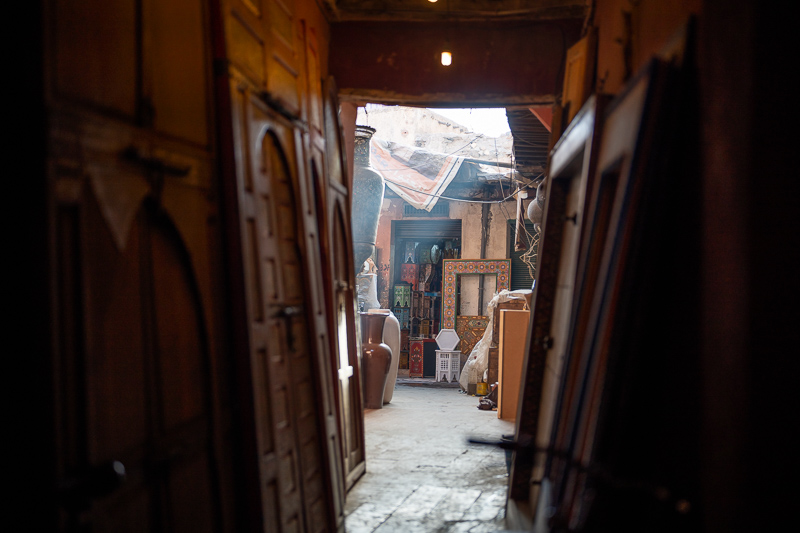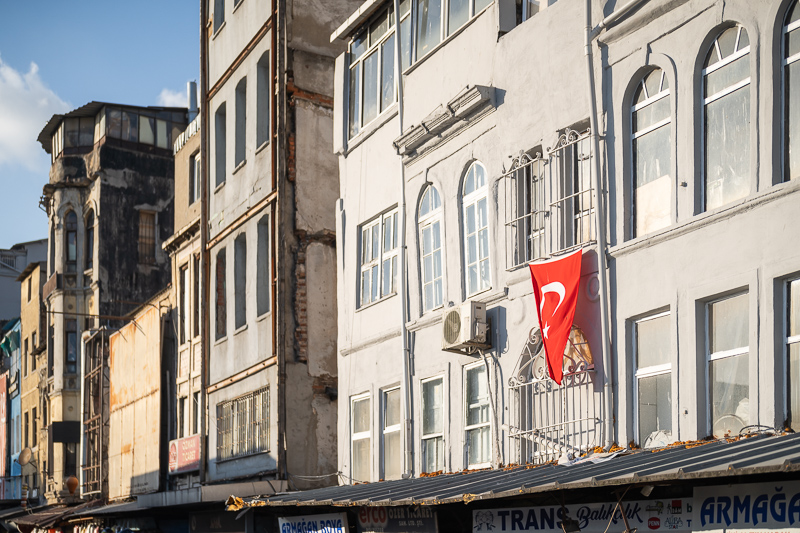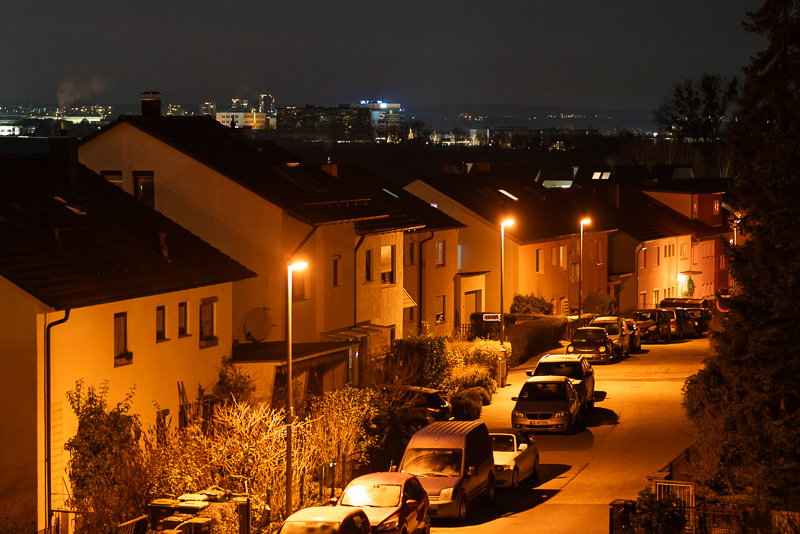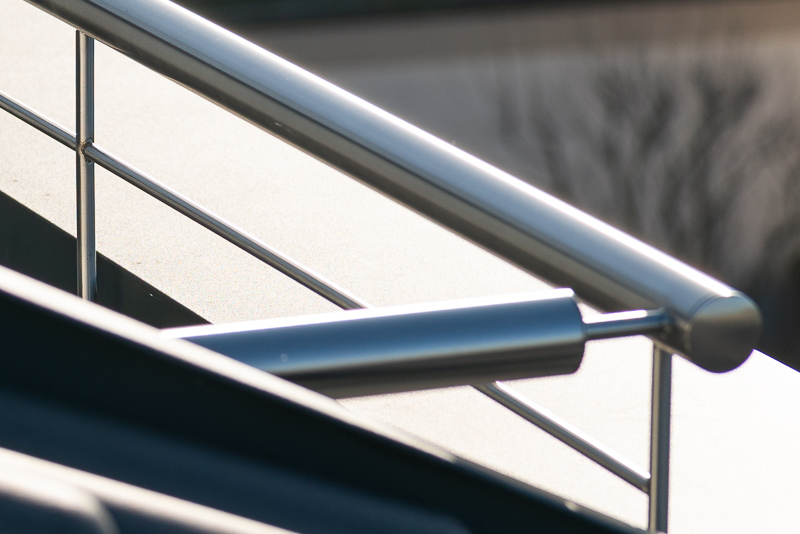Introduction

After the first fullframe E-mount cameras hit the market there was a lot of marketing fluff from the competitors that the E-mount was too narrow for fast high performance lenses. I cannot help but think this Sony FE 50mm 1.2 GM had mainly been designed to prove them wrong and from everything I can see it more than succeeded at that, but let’s have a closer look.
Sample Images






Most of the sample images in this review can be found in full resolution here.
Contents
Disclosure
The Sony FE 50mm 1.2 GM was kindly provided free of charge by our reader Eugen for review purposes, thanks a lot!
Specifications
The Sony FE 50mm 1.2 GM was Sony’s first lens with a maximum aperture of f/1.2, it has the following specifications:
- Diameter: 87 mm
- Length: 108 mm
- Weight: 778 g (no hood, no caps)
- Field of view: 47° (diagonally)
- Filter Diameter: 72 mm
- Number of Aperture Blades: 11 (rounded)
- Elements/Groups: 14/10

- Close Focusing Distance: 0.4 m
- Maximum Magnification: 1:5.6 (measured)
- Mount: Sony E
buy from Amazon.com | B&H | ebay.com (affiliate links) for $1898
Handling / Build Quality

If you have used any of the other GM primes you will feel right at home here.
The rubberized focus ring has decent damping and it takes 180° from the minimum focus distance (0.40 m) to infinity – no matter how fast you turn it, as the coupling is linear.
When you turn your camera off, the lens will remember the last focus position and will still be there when you turn the camera on again.

On the left side of the lens there is one of the programmable buttons and the AF-MF switch.

The aperture ring has 1/3 of a stop click stops and you can also set the ring to “A”(utomatic) and let the camera choose the aperture value or use the camera dial to change it. As is typical for the GM primes there is also a de-click lever found on the right side of the lens.
The outer casing seems to be made from a high quality polycarbonate and all markings are engraved and filled with paint.

The lens comes with a typical GM-style build quality lens hood that features a rubber bumper at the front and black felt on the inside.

The Sony FE 50mm 1.2 GM is almost the same size as the Sony FE 85mm 1.4 GM, the incorporation of additional lens buttons lead to a slightly changed casing design though.
AF performance
I am not shooting sports or fast moving animals/humans so if you want to know if the lens is fast enough for this or how it compares to other lenses in this segment you may have to look for a different review with a more detailed assessment of this aspect.
However, this time I got the chance to take pictures at a nightly fire performance and I have been astonished by how well the AF of this lens performs.

Vignetting
Light falloff

| f/1.2 | 2.7 EV |
| f/1.4 | 2.3 EV |
| f/2.0 | 1.6 EV |
| f/2.8 | 1.4 EV |
| f/4.0-f/16 | 1.3 EV |
The vignetting figures are about average for a lens like this. Wide open they are similar to the Samyang 50mm 1.2 XP and the Sigma 35mm 1.2 Art DG DN and slightly better than those of the Canon EF 50mm 1.2 L USM and Voigtländer 50mm 1.2 Nokton E.
The stopped down values are similar to the Voigtländer 50mm 1.2 Nokton E and about half a stop worse compared to the others.

It is recommended to have a look at this article first to get an idea how this brightness graph works.
Optical vignetting
Fast lenses usually show a noticeable amount of optical vignetting, especially so the compact ones. Without going too much into technical details optical vignetting leads to the truncation of light circles towards the borders of the frame.
In the center of the frame almost every lens will render a perfect circle, but only lenses with very low optical vignetting will keep this shape in the corners.
So in the following comparison we move from the center (left) to the extreme corner (right) and see how the shape of the light circle changes.
The Sony FE 50mm 1.2 GM shows a pretty decent performance here. It shows less optical vignetting than the Canon EF 50mm 1.2 L USM, Samyang 50mm 1.2 XP and Meike 50mm 1.2. The Voigtländer 50mm 1.2 Nokton E shows a similar amount. The shape of the out of focus highlights also still looks natural in the corners.
Despite the usage of several aspherical elements you can hardly see any onion ring structures here.
Sharpness
MTF Graphs

The MTF graphs promise very high contrast as well as resolution at f/1.2 over most of the frame, only the corner regions show some astigmatism and slightly worse (yet still good) performance. Stopped down the lens looks pretty much flawless.
Focus shift
Being a modern AF lens that usually focuses at working aperture, focus shift would not really be an issue, but for the sake of checking, I still checked if there is any and I am happy to report there isn’t.
infinity (42mp Sony A7rII)


The performance here matches what we saw in the MTF graphs very well. Center and midframe look great from f/1.2, the corners benefit from stopping down a bit.
If we compare this performance to the only other high performance f/1.2 AF lens for E-mount, the Sigma 35mm 1.2 Art DG DN, the Sigma performs a bit better here at wider apertures, but this is not really a field relevant difference in my opinion.
portrait 1.5 m (42mp Sony A7rII)
Let’s see what the performance is like at a typical portrait distance for a 50mm lens of ~1.5 m.

f/1.2 <—> f/2.0
In the center and midframe we already see some Moiré at f/1.2, stopped down to f/2.0 we see a lot of it everywhere. Again the Sigma 35mm 1.2 Art DG DN does a bit better at f/1.2 off-center here, but the Canon EF 50mm 1.2 L USM follows far behind and also the similarly big and complex Samyang 50mm 1.2 XP does not stand a chance.
Close 0.4 m, 1:5.6 (42mp Sony A7rII)
With a minimum focus distance of 0.4 m this Sony FE 50mm 1.2 GM is one of the closest focusing fast 50mm lenses. If the performance at 0.4 m wasn’t great compared to lenses not focusing as close, we would have to put things into perspective first, but also here the performance from f/1.2 is really good.
Flare resistance
As always evaluating flare is a complex matter since you can get any lens to look bad if you push it hard enough and a slight change of scenario can affect results a lot.
I was pleasantly surprised by Sony’s late lenses in this category, yet super fast lenses often did not fare very well, so I was not sure what to expect here.
Long story short: the performance in this category is very good, so I don’t have a lot to show you here. I don’t think I ever encountered any ghosts with this lens
The only thing that did happen to me twice is, that when shooting directly into the sun with the lens set to f/1.2 a faint ring flare appears together with some veiling flare:


The hood makes this already bulky lens even bulkier, so I tried in various scenarios if it actually makes a difference and this wasn’t really the case. In some cases shading the lens with my hand made a notable difference though, so maybe the hood should have been even slightly longer after all:
This was a staged scenario though and it is only one specific angle where you can create this veiling flare,
The Voigtländer VM 50mm 1.2 Nokton still holds the crown for the best performing 50mm 1.2 lens in this category, but this Sony lens does come very close.
Coma
We see slight Coma from f/1.2 to f/1.4, already at f/2.0 the lens is almost free from it though. As was already the case for the Sigma 35mm 1.2 Art DG DN, also with this lens I would not mind taking pictures during blue hour at f/1.2 without a tripod if needed.
I also took a picture of actual stars which are less demanding than the cityscape above:
Again it is a good idea to see where we are coming from and what a flagship 50mm 1.2 from only 15 years ago looked like in this category.
Distortion
The Sony FE 50mm 1.2 GM shows noticeable pincushion distortion. A profile is included in-lens for correcting Jpegs, Lightroom also features a profile for correcting Raw files that works very well, as can be seen from this comparison.
Bokeh

For me personally, this is the most important category for a lens like this. If you want to save some time: this is the best I have seen in a 50mm 1.2 AF lens so far.
Close distance



For creating a sense of depth not only how the out of focus areas are rendered is important, but also the contrast and resolution within the plane which is in focus. And here the Sony FE 50mm 1.2 GM is a real winner, at all distances.
The Voigtländer 50mm 1.2 Nokton E and the Sony FE 85mm 1.4 GM have a bit undercorrected spherical aberration at their maximum aperture, leading to very smooth out of focus rendering. This is not the case with this 50mm 1.2 GM, therefore some of the close distances samples already show a slight tendency towards double edged structures in the out of focus areas.
Mid distance


For an f/1.2 lens contrast and resolution are astonishing at the maximum aperture. In most situations I also find this lens’ bokeh very appealing. You can find many more samples taken at this distance throughout the review.
Long distance



Longer focus distances are were many of these lenses struggle. Adapted M-mount lenses show issues with field curvature (as does the Laowa 45mm 0.95), the Samyang 50mm 1.2 XP has a lack of sharpness at these distances with an off-center subject and triangle bokeh in the corners and the Canon EF 50mm 1.2 L USM also didn’t look particularly great.
This Sony FE 50mm 1.2 GM does not have any of these issues and I was generally very happy with its rendering. Those that are after the smoothest out of focus rendering may still prefer the Voigtländer 50mm 1.2 Nokton E though.
Sunstars
Like most of the other GM primes this Sony FE 50mm 1.2 GM makes use of a diaphragm with 11 aperture blades. The alignment of the blades is pretty good, so we see nice sunstars from f/5.6 to f/16.
If you want to know more about sunstars have a look at this article.
Chromatic aberration
lateral
The Sony FE 50mm 1.2 GM features a built-in lens correction profile for lateral CA that will also be recognized in most raw converters, so in the end: you won’t see any.
longitudinal
Another category with a surprisingly good performance. You can find some minor bokeh fringing when you look for it, but in none of the pictures I took with this lens it was bothersome let alone something that could ruin the picture.
In a high-contrast, backlit scene like this, the older f/1.2 lenses like the Canon EF 50mm 1.2 L USM would have looked awful and not only that, also Sony’s earlier, slower FE lenses like the FE 55mm 1.8 ZA and FE 35mm 1.4 ZA would have. This Sony FE 50mm 1.2 GM shows an exemplary performance though.
Conclusion
good
|
average
|
not good
|
If someone had asked me, what my “dream” 50mm 1.2 AF lens would look like, my description would have matched this Sony FE 50mm 1.2 GM lens pretty well. But to be honest, this actual lens would have exceeded my expectations, because I would have not thought that a lens like this could correct CA as well as it does and also feature such a fast yet accurate AF.
It is also worth noting, that Nikon’s and Canon’s 50mm 1.2 fullframe mirrorless offerings are bigger and heavier while – from everything I have seen so far – they are by no means better.
If I was a 50mm guy (hint: I am a 35mm guy) looking for a fast AF lens I would definitely buy this one.
buy from Amazon.com | B&H | ebay.com (affiliate links) for $1898
Alternatives
Sigma just released their own 50mm 1.2 lens for E-mount, but I did not yet get my hands on that. You can find the slower AF alternatives as well as the MF alternatives in our Guide to the best 50mm fullframe E-mount lenses.
Sample Images
















Most of the sample images in this review can be found in full resolution here.
Further Reading
- All E-mount reviews
- Sony FE Guide
- Lens aberrations explained
- Bokeh explained
- Comparison: Super fast 50mm M-mount lenses
Support Us
Did you find this article useful or just liked reading it? Treat us to a coffee!
![]()
![]()
![]() via Paypal
via Paypal
This site contains affiliate links. If you make a purchase using any of the links marked as affiliate links, I may receive a small commission at no additional cost to you. This helps support the creation of future content.
Latest posts by BastianK (see all)
- Recent Updates and Upcoming Content - March 24, 2025
- Review: Light Lens Lab 28mm 2.8 9-element - March 22, 2025
- Review: Sony FE 70-200mm 2.8 GM OSS II - March 8, 2025










































Great sample images. I read all the words about this amazing lens, but I’m here for the pictures.
it seems that the new Sigma is at least as good, if not better, for less money. I don’t need either, but do I love competition…
Thank you very much
Fabulous images. Great to be filling in some of the Sony lenses that are yet to be reviewed here.
50/1.4 and 50/2.5 next? I own the 50/2.5 and might be interested in adding the /1.4.
… and agreed, I look through all of your reviews, even for lenses I have no interest in, the images are always just superb.
Thank you very much for this review! Such an outstanding lens – I don’t actually remember any other lens tested on this website, where the “cons” section is empty.
I’m looking forward for your possible review of Sigma 50/1.2 in the future!
Astonishing! Both the lens and your pictures. Thank you Bastian!
Hard to decide between excellent lenses for e mount. Voigtlander 40 1.2, 50 1.2, 35 1.2dn, 35gm, 50gm… Each has a slight advantage over the other. 35gm and 50 1.2gm are close to perfection however I love 35 1.2dn for portraits, and 40 1.2 Nokton for size and focal length.
Looks like a nice lens, but don’t you think Voigtlander’s 50/1.2 has slightly more beautiful tonal rendering and colors?
Not really, no.
The review is excellent, as always.
I sometimes wonder if my taste for older or lower tech lenses is really perceptual or if it is dogmatic. Your excellent review and images remind me it is the former. This is not what I want! it reminds me of the problem with interlaced video – it actually was technically superior than 24P recording but it was so real, it made everything look like a news clip or a soap opera.
Oddly, these lenses come in an age when barely anyone prints, much less at very large sizes.
The next review will be of a fast lower tech old lens 🙂
Fantastic photos, Bastian, and nice lens! 🙂 Your review aligns perfectly with my experience over the past three years with this lens. I primarily use it for capturing moments with kids, family, and friends. It shines for mid-range environmental portraits outdoors, and performs admirably indoors in low-light conditions. The autofocus is fast and reliable (with the r4), even with kids in constant motion. It also stands out during the occasional city outing or when dabbling in street photography, both in daylight and handheld at night. It excels across almost all scenarios. Do I sometimes wish it were smaller? Absolutely. Yet, it’s quite manageable. And after three years, it remains my most-used and most-enjoyed lens.
Thanks again for sending me the lens and your patience waiting for me to publish the review 🙂
Superb.
I remember when the Sigma ART series were considered as a peak lens designs on the market.
But just looking at this Sony, it seems like its at least 3x better and there is hardly anywhere else you could improve it.
3 times better, ahh, no, sorry. Sigma 50 Art smokes the Sony in the distortion dept.
I have too many 50mm lenses (50mm 1.2 GM 1.4 GM, Voigt Apo 50, 65, Otus 55 that I just can’t sell). Have also used Zony 55mm and also Nikon 50mm 1.8 Z.
There are only so few cases where I would not opt for 1.2 GM. It has overall great characteristics in everything and really no weak belly.
Yes it can be lighter (ex Nikon 50mm 1.8 Z), yes there can always be more sharpness (1.4 GM at >1m), colors can be corrected much better (maybe 50mm f2 APO but not big difference, however 65mm APO is on another level), better manual focus action etc.
However none of the other lenses have such smooth bokeh and rendering while not being really weak at anything either.
50mm 1.2 GM is one of those lenses that make it worth to change system.
I love that we have Sigma 1.2 50mm competition today, and curious how it will fare.
How do you find the difference between sony 50 mm 1.2 GM and the 50 mm 1.4 GM? I cannot decide and I can get both with not much difference in price between the two.
I guess it comes down to if the 1.2 is worth the extra weight?
Best, Jon
This is probably a dumb question but how would you compare this against the Sony 35mm f1.4gm. I’m kinda wanting more of a normal focal length lens that has dreamy character. I already have the 35mm.
Would this be a better 1.4 lens for astro mosaics than the 50GM 1.4 ?
The 1.4 corrects Coma slightly better, the 1.2 has slightly less Vignetting at f/1.4 and f/2.0. I call it a draw.
As always, your reviews and sample images are great. They make me reconsider my plan to buy the new Sigma Art 50mm f/1.2.As always, your reviews and sample images are great. They make me reconsider my plan to buy the new Sigma Art 50mm f/1.2.
Best wishes to you, Bastian, and the gang!
Tube el Sony 50 GM F1.2 un tiempo pero lo vendí porque no lo utilizaba tanto como esperaba. Ahora, me he dado cuenta que me gustan mucho los objetivos manuales Voigtlander para Sony. Me gustaría saber, de los 4 APO que fabrican, cuál es el que mejor calidad ofrece de todos. Gracias.
The differences in focal length are more important that the differences in optical quality, so pick the one with the focal length you want.
Gracias aunque estoy totalmente de acuerdo, seré más preciso. Entre el 65 i el 110, cual tiene mayor calidad para paisaje.
They are equally good, really.
Thanks for the test and the, as always, great shots, Bastian! The 1.2 is really a fantastic lens. The accuracy of the AF is very impressive. The same goes for the almost non-existent CAs. However, the lens is almost too good for me. It’s hard to describe, but what fascinates me on the one hand is sometimes almost too perfect for me on the other. Somehow, in the end, my heart beats a little more for the 1.2/50 Nokton. Unfortunately, my eyes aren’t getting any better, so a good AF is a strong argument for me (who, by the way, only shot analogue and focused manually until last year).
Best wishes,
Siegfried
Big fan of the 50mm 1.2 Nokton myself here, but lately also in need of AF, so I hear you 🙂
In the end, I finally sold my 50mm 1.4 GM and Otus 55mm.
Otus was just too large on adapter + manual focus. Otherwise excellent but it’s not 2014 today.
50mm 1.4 GM was the sharpest and most ideal size with AF but some distortion and did not like how it behaved vs bright flaring point light sources at night. It was much sharper in the corners at 1.4 compared to 1.2 GM at f4, and still probably sharper stopped down. Bokeh and rendering is better on 1.2 GM however. Also 1.2 GM is faster focusing when you have A1 it’s noticeable on the keeper rate for street photography for example.
I kept Voigtlander 50mm f2 APO for it’s sunstars, flare performance, edge to edge landscape potential but also for its structured bokeh which is something different. Also much harder to sell manual focus lenses 🙂
1.4 GM has ok bokeh. 1.2GM has bokeh like an 85mm. Voigtlander 50mm f2 has bokeh only for connoisseurs 🙂 it’s different, pleasing but not creamy.
Now I have 2 50mm lenses 1.2 GM and Voigtlander 50mm APO. I don’t like shooting 85mm so I use 1.2GM for portraits, also where I really need 1.2 low light or when I need the fastest focusing 50mm ever made. APO when I need smaller or focus on slower processes, daylight/tripod, want sunstars or a specific look
Even though I sold it, I highly recommend 50mm 1.4 GM if someone is only going to have a single 50mm for varied use cases.
Would love it if you review 1.4 GM one day. I have a feeling that you will like it but would also miss the 1.2 ‘magic’
Fantastic photo’s and a fantastic lens!
But used at f5.6 will there be much difference with a photo made with the FE 55mm f1.8?
I know you buy this lens for small DOF, but I came back from it, I do want the background playing an importat role in my pictures these days.
Not enough to be worth it making the change.
If you are not happy with the 55mm 1.8 and looking for something better and you don’t need f/1.2 anyway maybe have a look at the 50mm 1.4 GM.